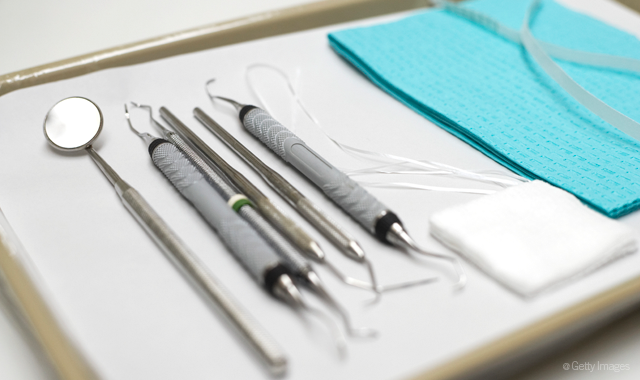New research identifies role of tiny bubbles in tooth cleaning
Research into the science behind ultrasonic scalers, used by dental professionals to remove built up plaque, has identified that the formation of tiny bubbles around the head is key to the cleaning process.

Research into the science behind ultrasonic scalers, used by dental professionals to remove built up plaque, has identified that the formation of tiny bubbles around the head is key to the cleaning process.
The bubble formation, or cavitation, of water around the head of the scaler was observed using high-speed cameras. Scalers of differing power, and head shape, were used and compared to quantify the patterns of cavitation.
Trending research: 9 of the scariest medical conditions with links to oral health
A research team at the University of Birmingham believes that the methods developed in the study will help to test new instrument designs to maximize cavitation, with the aim of designing ultrasonic scalers that operate without touching the tooth surface. By doing so, the process of teeth cleaning at the dentist would become both less painful and more effective.
The findings, published in PLOS ONE, are the first to prove that cavitation takes place around the free end of ultrasonic scalers.
Professor Damien Walmsley, from the School of Dentistry at the University of Birmingham, explained, “Removing dental plaque and calculus, that is the build-up of what we know as tartar or hard plaque, is a big part of maintaining oral health and a regular occurrence in dental check-ups. These findings will help us to understand how to make the tools as effective as possible.”
A Satelec ultrasonic scaler, operating at 29 kHz with three different shaped tips, was studied at medium and high operating power using high speed imaging at 15,000, 90,000 and 250,000 frames per second, and the tip displacement was recorded using scanning laser vibrometry.
More dental research: Mouthbreathers at higher risk of tooth decay
The team were not only able to show that cavitation occurred at the free end of the tip, but that it increases with power, and the area and width of the cavitation cloud varies for different shaped tips.
Nina Vyas, lead author of the paper from the University of Birmingham, said, “Other studies we have done, using electron microscopy, have shown that removal of plaque biofilm is increased when cavitation is increased. Putting the pieces together, we can therefore say that altering the shape and power of these commonly used tools make them more effective, and hopefully, pain-free.”
For more, check out this video:
Oral Health Pavilion at HLTH 2024 Highlighted Links Between Dental and General Health
November 4th 2024At HLTH 2024, CareQuest, Colgate-Palmolive, Henry Schein, and PDS Health launched an Oral Health Pavilion to showcase how integrating oral and general health can improve patient outcomes and reduce costs.